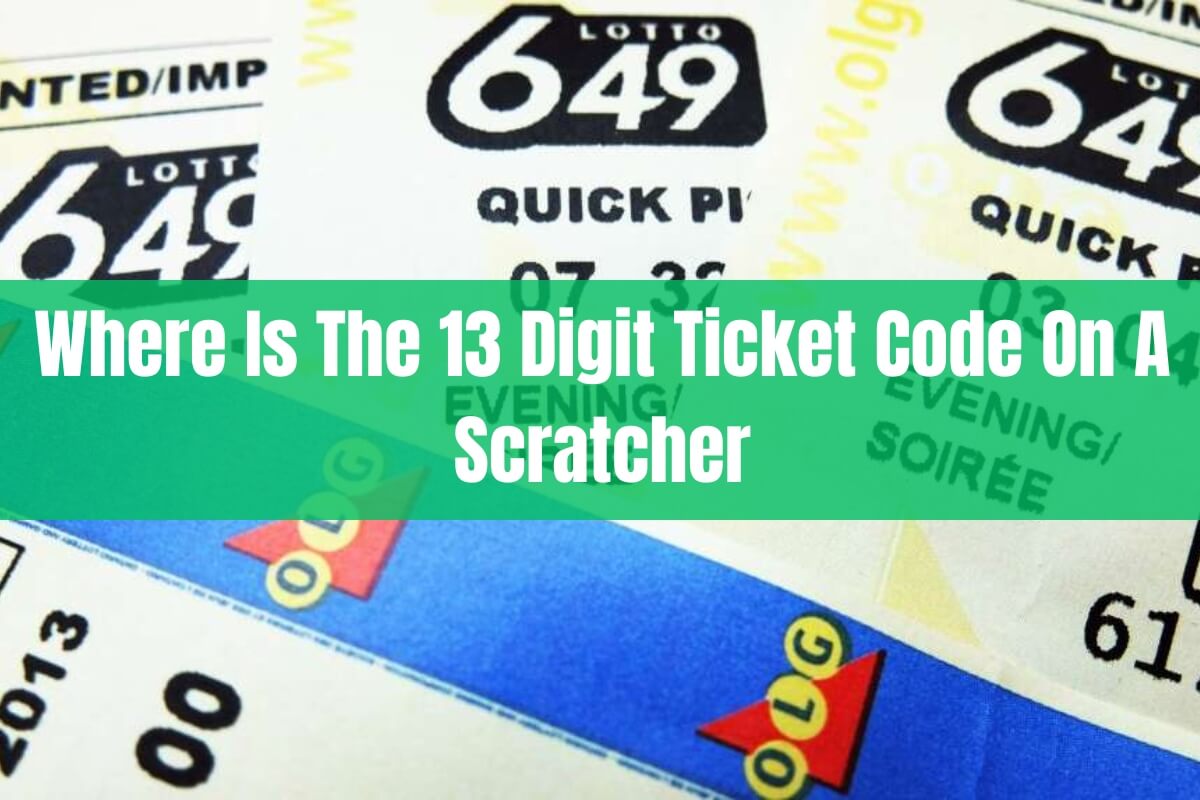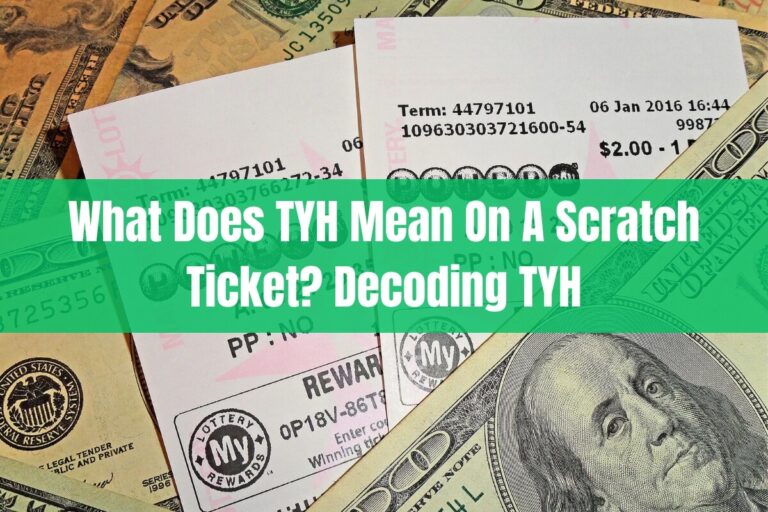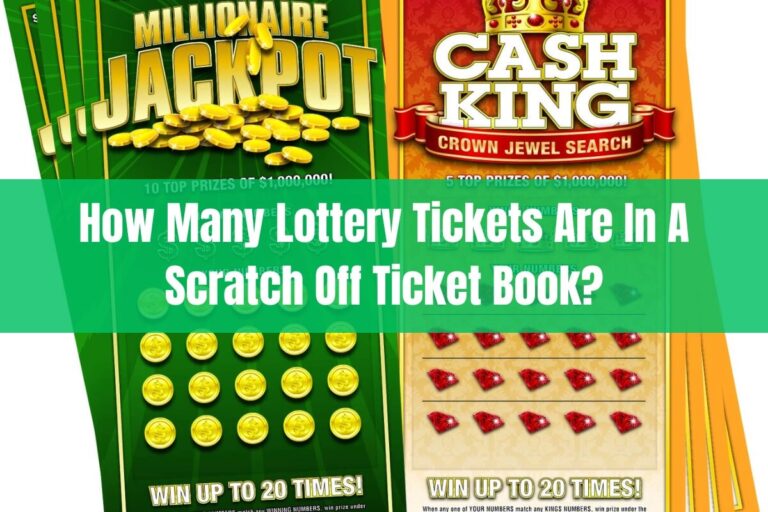
Scratch-off lottery tickets, known as “scratchers,” have grown immensely popular across the United States and worldwide. The 13-digit code is located beneath the scratch-off latex coating on the front of these instant win tickets. This code plays a crucial role that we’ll explore in-depth.
In this guide, we’ll unravel the mysteries surrounding scratch-off ticket codes. We’ll examine the different codes found on scratchers and how they validate winners. We’ll also compare validation methods used by various lottery agencies. Along the way, you’ll discover fascinating scratch-off ticket facts and statistics.
What is a Scratch-Off Lottery Ticket?
Before we get into the nitty-gritty of ticket codes, let’s quickly go over what scratch-off lottery tickets (or scratchers) actually are. These are a type of instant win game offered by lottery agencies and commissions around the world.
Unlike draw games like Powerball or Mega Millions where you have to wait for numbers to be drawn, scratch-off tickets have pre-determined outcomes hidden under a latex coating. To play, you simply scratch off the covering to reveal whether you have a winning or losing ticket immediately.
Scratch-off games come in a wide variety. Some offer instant cash prizes, while others have theme park tickets, merchandise, or other experiential rewards. The low price points make them an affordable and accessible form of gambling for many people. Their instant gratification aspect also adds to the excitement and appeal.
The Importance of Ticket Codes and Validation
With any lottery game involving cash prizes, security is of utmost importance to maintain integrity and prevent fraud or counterfeiting of tickets. This is where special codes and validation measures come into play for scratch-off lottery tickets.
Every single scratcher has multiple codes printed on it during the manufacturing process. These codes act as security checkpoints to verify the ticket’s legitimacy if it is redeemed as a winner at a lottery retailer. If the codes don’t match up or fail the validation process, it prevents the retailer from paying out any prize improperly.
The coding and validation system is a crucial way that lottery agencies can control things and ensure all payouts are legitimate. It protects the lottery, retailers, and players alike from counterfeits or scams.
Understanding the 13 Digit Code on California Scratchers
Now let’s get into the heart of the matter – that 13-digit code found on California “Scratcher” tickets from the state lottery agency. As mentioned initially, this unique number is located on the front of the ticket under the latex scratch-off coating you have to remove to play the game.
So what exactly do those 13 digits represent? It’s actually a combination of three different code elements:
- Game Number (first 3 digits) – Identifies the specific scratch game
- Book Number (next 3 digits) – Each game has multiple “books” of tickets
- Ticket Number (final 7 digits) – The unique sequential number for that ticket
Together, this 13-digit code serves to identify each individual ticket printed for any given scratch-off game offered by the California Lottery. No two tickets will share the same full 13-digit serial number.
However, it’s important to note that the 13-digit code itself cannot be used to actually play or determine if you have a winning or losing ticket. Its sole purpose is for validation and authentication alongside the other security codes, which we’ll cover next.
The Separate Barcode on Scratchers
In addition to the 13-digit code, California Scratchers also have a separate barcode printed on the front under that same latex coating area. This is the code that actually matters for determining whether your ticket is a winner or not.
When you scratch off the latex, in addition to revealing the game data and any prizes, you’ll also expose this barcode. Lottery retailers can scan this 2D barcode to easily check if it is a winning or losing ticket.
So then why have both the 13-digit code and the ticket barcode? It’s all about layered security and verification.
Redeeming a Winning Scratcher at a Retailer
Let’s walk through the process of what happens when you take a winning scratcher ticket to a lottery retailer (e.g. gas station, grocery store, etc.) to claim your prize:
- The Barcode Scan – The retailer will first scan the exposed barcode from under the latex coating. This lets their lottery terminal instantly see if it’s a winner.
- Manual Code Entry – However, the retailer can’t pay out any prizes yet. They will also need to manually enter the 3-digit game number portion from the ticket’s 13-digit code.
- Validation – By combining the scanned barcode data and the manually entered 3-digit game number code, the lottery system can validate that it matches the expected scratch-off ticket.
- Payout – Only after this double verification can the lottery terminal confirm the win and allow the retailer to pay you your prize money.
So the layered approach of scanning the main barcode for the win details and manually inputting the verifying portion of the 13-digit code is a security measure. It ensures the barcode data lines up with the expected game and ticket number information to validate legitimacy.
Theories on the 3-Digit Code’s Meaning
There’s been some speculation around why specifically the 3-digit game number is used for this secondary manual validation step by retailers. One theory is that those 3 digits could somehow encode information about the game’s prize tiers or possible outcome codes.
However, California Lottery officials have never confirmed or detailed the significance, if any, of the specific digits used for this additional code entry step. It may simply be an arbitrary portion of the overall 13-digit code that gets used for redundant validation.
So while unconfirmed, either possibility makes sense from a security standpoint – either confirming expected prize tier outcome alignment or just adding an extra redundant check against the full ticket serial number data.
Scratchers from Other State Lotteries
While we’ve focused on the specific example of California Scratcher tickets so far, the general principles around coding, validation, and securing scratch-off lottery tickets applies universally. However, the specific approaches and code formats can vary across different lottery jurisdictions and agencies.
For example, many other U.S. state lotteries actually include the full 13 to 18-digit ticket serial number under the scratch-off coating itself. This single exposed code combines the game identification and unique ticket number data all together.
Instead of having a separate barcode and doing a two-part validation like California, some states just have retailers scan or manually input the full code revealed after scratching.
Other states may use different coding schemes, digit lengths, or combinations of barcodes and serial numbers. But they all utilize methods to verify and authenticate legitimacy when a scratcher gets redeemed as a winner.
Responsible Play and Claiming Big Prizes
While scratch-off lottery tickets can be fun and exciting to play, it’s important to do so responsibly. Set a reasonable budget ahead of time and stick to it. Know the odds and play for entertainment, not as a way to make money.
If you do happen to win a larger prize over the typical $599 payout limit at retailers, there are different procedures for claiming. Many states require larger wins to be redeemed in-person at a lottery office or claim center, not at retail locations.
Be sure to check your specific state’s lottery rules and regulations for large prize claim instructions. You’ll likely need to complete a claim form and submit additional documents to prove your identity and ticket ownership.
Fascinating Scratch-Off Ticket Facts & Statistics
Before wrapping up, let’s look at some fascinating facts and figures about the scratch-off lottery ticket industry:
- Scratchers make up approximately 63% of total traditional lottery sales in the U.S.
- Over $81 billion in scratch-off tickets were sold in the U.S. in fiscal year 2020.
- The odds of winning any prize (even $1) on a $1 scratcher are typically around 1 in 4.5.
- The largest lottery jackpot ever won was $1.58 billion in Florida in 2023.
- Scratchers have been around since the 1970s, with the first modern scratch-off launched in 1974.
As you can see, scratch-off tickets are immensely popular and a huge revenue generator for lottery agencies and beneficiary causes like education funds.
Frequently Asked Questions
Can I use the 13-digit code to check if my scratcher is a winner?
No, the 13-digit code itself cannot be used to determine if a California Scratcher ticket is a winner. Only the barcode revealed under the latex area can validate winning status.
Do I have to scratch off the whole play area to claim a prize?
No, typically just exposing the barcode and validation number is sufficient for prize redemption. No need to scratch off the entire play zone unless instructed.
What if I bought a scratch-off ticket that was already scratched?
Return the pre-scratched or damaged ticket immediately to wherever you purchased it. Request a new unscratched ticket. Damaged tickets are considered void.
Why do retailers have to manually enter a code? Can’t they just scan the barcode?
The additional manual code entry acts as a security validation check against the barcode and full ticket serial number information before paying any prizes.
Final Talk
The 13-digit ticket code found under the latex scratch-off coating on California Lottery Scratchers tickets is a key security and validation element. While not used for gameplay itself, the code allows the lottery system to authenticate the legitimacy of any potential winning ticket.
Through a combination of the 13-digit serial number, a separate encrypted barcode, and manual code entry steps at retailers, the lottery employs layered security measures. This protects against fraud, counterfeits, and ensures payouts only happen for legitimate wins.
While the specific validation processes and codes involved can vary across lottery jurisdictions, they are vital to maintaining integrity and player trust in scratch-off lottery games everywhere.
So the next time you play a fun scratcher ticket game, you can appreciate the behind-the-scenes role those codes play in delivering a secure lottery experience. Here’s to happy (and validated!) scratching!




